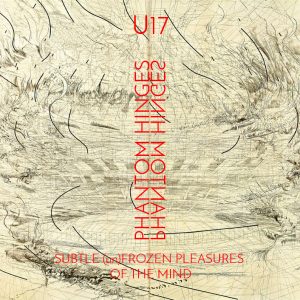
Image: Julie Mehretu, The Seven Acts of Mercy, ink and acrylic on canvas, 2004
In January 2016 Peter Eisenman published Palladio Virtuel, a comprehensive study of the conceptual structure of Palladio’s ‘ideal’ villas, described in his treatise The Four Books on Architecture. Six months later, Ninantec released the free-to-play, location based augmented reality game, Pokemon Go. The intention of both, was to offer an alternative reading of an existing ‘truth’ using a method of precise virtual layering. While Eisenman carefully deconstructs the complex spatial and geometric logic of Palladio to inform an alternative intellectual position; Pokemen Go, creates new types of digitally overlaid cultural signifiers, allowing new hybridised readings of existing places (leading to new intriguing and counterintuitive patterns of social behaviour and interaction)
U17 is interested in digital architecture and its capacity for processing and communicating the ‘unseen’ in architecture. The examples of virtual over-layering and historical conceptual deconstruction described above underpin the key interests of our agenda this year. We will be situating digital techniques as operational hinges between concept and experience, geometry and space, rationale and sense, signifier and signified. We will explore the ideas of new ‘un-frozen’, reflexive orders for digital architecture, and the narrative potential of the digitally manufactured original.
Incoming students will start the year with an exercise of both virtual deconstruction and construction. A historical expedition between Venice, Verona and Milan, will serve to catalogue the ‘unseen’ through close-reading and virtual/conceptual documentation of chosen case studies. Simultaneously, students will engage in designing, fabricating and installing zero-tolerance fragment projects, on site, in collaboration with the advanced fabrication team at Grymsdyke Farm. These projects will serve to establish ideological approaches to site, and will form the thematic basis for DR design projects.
The chosen site for this year is itself a kind of ‘phantom hinge’. The Strand (meaning both [river]edge and connective tissue) acts a direct connection between London’s economic and political centres with its Stamp Office, historically functioning as an operational pivot between trade and governance (a relationship that has required drastic re-calibration since the referendum of June 23rd). Pivotal relationships continue at Kingsway, between the legal world of Lincoln’s Inn and the theatres and market traders of Covent Garden. Students will be expected to engage with the interpretative, transgrationary interprative classicism of Jones ,Gibbs, Wren and Gibson in forming their own digital orders for this interstitial urban zone.
Y2 Students will develop the themes set out in Y1 to establish suitable individual briefs for their thesis projects. Throughout the year the unit will be supported by architects/ designers at Wilkinson Eyre and Piercy & Company and engineers from Robert Bird and Price & Myers. Students will be encouraged to take advantage of the advanced fabrication facilities at Grymsdyke Farm and we will collaborating with the fabricators at Benchmark Specialist Furniture and Excel Architectural Metalwork.
1) a reference to Bernard Tschumi’s description of the ‘pleasure of geometry’ in Architecture and Disjunction, MIT 1996